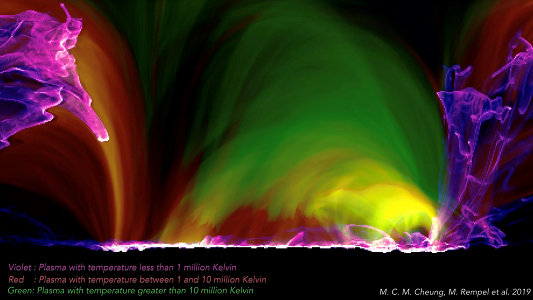Past Events
Exploring the Extremes of Excitonic Photophysics
Abstract:My group studies the extremes of excitonic absorption and emission in condensed phase chemical/semiconductor systems. We have two primary themes: 1) The use of self-organized nanoscale systems that have controlled light absorption and energy propagation; 2) Development of molecular/inorganic materials which absorb and emit from 1-2 microns, the Short-Wavelength Infrared (SWIR). In this talk, I will discuss some of our recent research projects in the group.
Quantum Talk with Denise Ruffner
Denise Ruffer is the founder of the global non-profit organization Women in Quantum. She will be giving a talk about the organization and its support for students in the quantum industry. A happy hour will follow for students who pre-registered for the event/
Constraining the composition of exo-planetary material around white dwarf stars
Seminar Abstract:
POSTPONED to February 16: Baryogenesis, New Higgs Bosons, and What's Next
Colloquia are Wednesdays at 4:40 p.m. unless otherwise noted and will be in person at DUAN G1B20, as well as online via Zoom and Youtube. If you are not a student/faculty member in physics, pre-register with Veronica Lingo (veronica.lingo@colorado.edu) to attend a lecture.
Masks are required for all colloquium attendees, regardless of vaccination status.
Statistics, Optimization and Machine Learning Seminar
Abstract: We introduce averaged circuit eigenvalue sampling (ACES), a method for scalable noise metrology of quantum circuits that stands for Averaged Circuit Eigenvalue Sampling. It simultaneously estimates the individual error rates of all the gates in collections of quantum circuits, and can even account for space and time correlations between these gates. ACES strictly generalizes randomized benchmarking (RB), interleaved RB, simultaneous RB and several other related techniques.
Formation of a Hot Corona and Quasi-periodic Oscillations in General Relativistic MHD Simulations of Luminous Black Hole Accretion Disks
Abstract: The gravitational pull of a black hole attracts gas and forms a physical laboratory whose extreme conditions cannot be replicated on Earth. The infalling gas forms an accretion disk where the interplay between hydromagnetic processes and the warping of space-time releases gravitational energy in the form of radiation, relativistic jets, and winds. It is likely that most gas falls into black holes when the accretion rate approaches the Eddington limit, at which point radiation pressure
Morse theory, the topology of manifolds and energy landscapes
This meeting is both in-person and Zoom.
**********
Recent Observations of Stellar Flares on G-, K-, and M-dwarf Stars and Possible Mass Ejections
If you are interested in attending, please contact Jeremy Averyt (firstname.lastname at lasp.colorado.edu) to be added to the mailing list.
**********
Abstract:
The Secret Lives of Atomic Clocks
Abstract:
I will look inside a cesium clock and describe what I see. I will describe how clocks are calibrated. If I have time at the end, I will describe how clocks communicate with each other.
Zoom info will be sent out in the JILA email announcement.
JILA colloquia are available on a YouTube playlist
https://www.youtube.com/playlist?list=PLupSU3PE5is1Te1Ua94NMh3NLA55DCNCO
Free range frequency combs – mobilizing frequency comb laser technology for energy and climate applications from atmospheric sensing to wildland fire research
Colloquia are Wednesdays at 4:00 p.m. unless otherwise noted and will be in person at DUAN G1B20, as well as online via zoom and Youtube. If you are not a student/faculty member in physics, pre-register with Veronica Lingo (veronica.lingo@colorado.edu) to attend a lecture.
Masks are required for all colloquium attendees, regardless of vaccination status.
**********
Hints About the Earliest Galaxies
Please note that this colloquium is online only.
Abstract:
Phase Dynamics in RF Driven Graphene Josephson Junctions
Josephson junctions driven by RF excitation can exhibit phase locking - the inverse AC Josephson effect. This synchronization gives rise to quantized DC voltage plateaus called Shapiro steps that are the basis of modern voltage standards. While the nonlinear dynamics of conventional Josephson junctions were an intense area of research in the 1980s, this measurement technique has reemerged in the past decade in materials science as a probe for topological states of matter. In this talk, I will present measurements of graphene Josephson junctions which s




